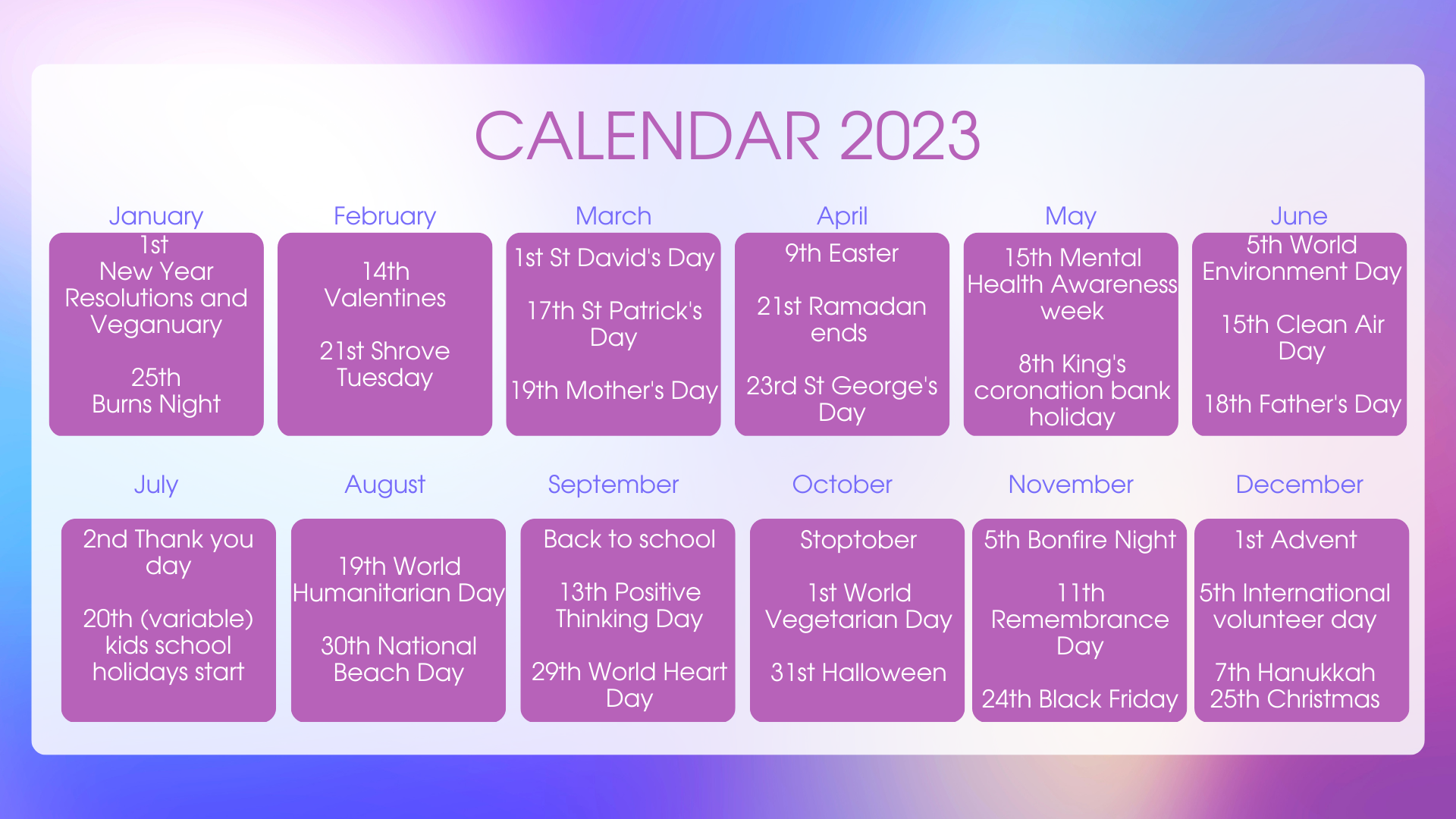Key diary dates for 2023 - planning your digital content
As we head into 2023 it’s important to plan content and campaigns around newsworthy and noteworthy events which happen annually so I thought I’d produce this useful diary of key dates which you can use to make sure you don’t miss an opportunity!
How will a digital PR calendar help your content planning?
Digital PR calendars like this one can add significant value to your team’s content efforts by providing a framework for the upcoming year.
My digital PR calendar provides your team with business insights on key holidays and dates throughout the year, as well as giving you the types of content journalists are looking for, to help you plan your digital PR ideas and create successful content! Digital PR calendars not only provide your company with a clear structure for future content planning, but they also serve as an easy-to-use reference tool for stakeholders throughout your business and for 3rd party users, such as agencies. Calendars like these serve as a clear reference point for those across departments, both at the senior level, within your team and with external partners, in order to track key updates, dates, and announcements. By using a calendar such as this, you can plan the basis of your marketing activity, whilst still remaining flexible to adapt to changes throughout the year.
Tips to help you plan your content
Planning your Digital PR activity isn’t something you should just work on in a bubble, keeping an eye on your competitors is key!
What holidays do they cover; what types of content do they create; and where is their content published? Taking time to research this will save you hours in the long run and will provide you with key insights into where to target your content and which publications you should aim to be placed in. Devote more resources to the events that are the most relevant fit for your brand and target audience. Again, this necessitates a review of your competitors’ publications, as well as your own past performance and third-party resources such as ResponseSource. What events, for example, would be most relevant to you if you sell fireworks? Two might be Bonfire Night and New Year’s Eve, but which one should you prioritise? Because creating and publishing content takes time, it is critical that you get the most out of your efforts. Consider what events your competitors focus on, which holidays have previously performed well for you, and what opportunities are available via platforms like ResponseSource. This extra bit of research can make all the difference. Create a media list of journalists, this will help you identify and categorise journalists based on their industries, such as nationals like The Sun, which covers a wide range of topics, to others that focus specifically on hospitality, for example. This can help you choose the most appropriate publication for your content too! This will allow you to tailor your content to suit each sector you target, making it easier for the journalist and increasing your chance of them picking up your work.
Tips for creating content and outreaching to journalists
The next step is to work out what type of format you want the content for your Digital PR campaign to take. This will vary depending on your company and industry, as well as your campaign goals and overall Digital PR strategy. Below, we have detailed several key formats to help you achieve your goals when planning content for holidays and important dates:
Thematic / Seasonal content. Create content centred on the day or holiday itself. For example, Best Dog Treats for Christmas 2022. While this type of content isn’t evergreen, it can be easily formatted into a list that can be updated each year to keep it fresh and relevant.
Expert opinion pieces. Include expert opinions within your content. You could be the expert, however, it also provides an opportunity to reach out to experts within your industry. For example, Holiday expert John Smith helps families with money saving tips for the summer holidays. You can take this one step further by outreaching to multiple experts to acquire a variety of opinions, not just one or two, this will add greater authority & credibility to your piece!
Split testing your headlines. Got two amazing headlines and unsure which one will work best? Split testing (or A/B testing) different headlines will provide you with key insights to help you understand what headlines work best for open rates. Results from these tests can also help you understand what copy works best for when you write more headlines in the future too!
Visualise data & images. Whether through custom graphics or charts, visualised data is not only easier for readers to view and helps your content stand out, but it will also increase your chances of journalists picking up your submission. Journalists are incredibly short on time, so providing them with all the means necessary like free images (and other expert opinions too) will increase your chances for success.
Updating & repurposing evergreen content. Evergreen content is intended to be, well, evergreen; it does not date as quickly as thematic/seasonal content which is intended for a specific date or period. However, even though it is evergreen, it still needs pruning now and again. For example, recipes for making homemade easter eggs may remain largely unchanged, but as people’s lifestyles change, incorporating alternative healthier ingredients into the recipe can add value to your content.

